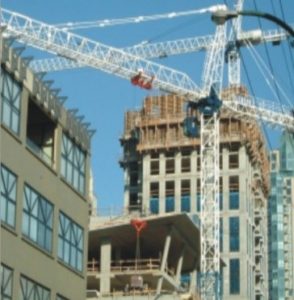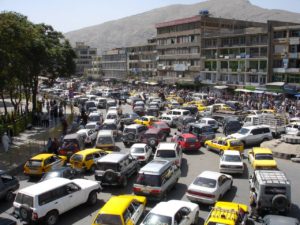



Other nations may not have the most applicable engineering techniques for rebuilding infrastructure in other countries. Afghanistan, for example, does not have well-documented engineering design and construction standards. Both U.S. and international construction standards may appear logical to use for this purpose. However, it is often difficult, and many times impossible, to meet traditional U.S. engineering design and construction standards in post-conflict areas owing to limitations that include: a scarcity of high-quality materials and construction equipment, a lack of understanding of the terrain and environment, a lack of awareness of available local skills, a lack of skilled labor, and poor socio-economic conditions. A more deliberate and holistic approach is needed in which we consider and integrate the host nation’s capabilities and under-stand their limitations. The majority of infrastructure projects in post-conflict countries are mission-specific. In most cases, once constructed and operational, very little emphasis is given addressing maintenance issues. Site-specific and culturally sustainable guidance for maintenance must be implemented as a part of the design process and incorporated into training programs to ensure sustainable, long-term performance or service life of the infrastructure.
The core problems in Afghanistan are poorly documented engineering particularly design and construction standards, as well as a short supply of fundamental engineering knowledge among Afghans. Helping the new Afghan engineers and practitioners in the development of their engineering standards, transferring and sharing with them the fundamental engineering knowledge, and teaching them how to maintain the infrastructure will begin a positive process to rebuild of their region and the entire country. Thus, the Afghans will acquire engineering capability and ownership in their infrastructure.
This division operates in a context of specialized research activities to develop solutions for the core problems mentioned above. The division comprises the Engineering Research and Monitoring Department and the Management Research and Monitoring Department. The two departments have well experienced engineers and practicing managers that are active together design, implement, monitor, and evaluated researches. The researchers undertake research and monitoring activities in the design, construction, planning, quality control, and management process improvement areas of engineering.
The division particularly:
- Accompanies the bodies of huge developmental projects to better off the standards of quality that the outcome of the projects will have
- Gathers local engineering knowledge and existing indigenous examples of sustainable engineering researches by collaborating with local experts and Afghan universities.
- Compiles current in-theater best engineering practices and “lessons learned” by acquiring information on engineering projects
- Undertakes approaches that would refine and develop the engineering codes and standards being practiced in the engineering industry of Afghanistan
- Works with the management committees of national programs to develop approaches that would ensure the quality of work from the view of an engineer
- Assess the core roots of the problems that Afghan engineers have been facing in social, economic and professional aspects of their lives
Research and Monitoring activities of AEA
- Research in the technology and knowledge for the growth of technology in Afghanistan
- Research in the rising of the quality status of construction projects and also monitoring of the projects
- Research in the social disputes, academic disputes and professional and technical disputes to the national level
- Research about the curriculum of the country in regard of the educational organizations and also monitoring from the quality
- Cooperation in the research and monitoring about programs of academic and technical that is program by the government and foreign NGOs and are implementing in the level of the country
Our research
AEA have research and monitoring in different aspects and parts of engineering. The research and monitoring teams here is working to achieve great results for the projects that are implementing also the projects which are going implantation in the future. The research and monitoring performs as professional as extent of possibility to decrease the problems of quality. Another problem, which is very critical is that AEA is having investment in human resources also to cover all the issues which is not in the attention of the government. The government of the Islamic republic of Afghanistan is busy in other issues and not paying required attention to engineering projects. AEA is cooperate with them to do the job for the government. For quality of construction projects AEA is will be going in the past a research that positive effects on the quality of projects. Also for the Kabul city transportation problems research perform by AEA. The research are the samples of hard works of our professional engineers. Also we research by university professors in the context of developing the outcomes to be implemented by the donors also by the companies. The other aspect of our research is to perform a good example of quality management. Policies of Afghan government are compatible to our approach and actually we are oversight the ministries and help them to obtain the good achievements that engineering programs are related fields of the ministries. Important activities are that AEA did so far for collecting university teachers, university students and engineers around the Afghanistan and all over the world is to perform well and have a separate division in AEA for these activities. In order to bring fruitful inventions this division hard works for separate division of AEA to level their capacity to a higher and elevated status. We internally and externally research and monitor and that is really very helpful for our own capacity and for the development of the engineers, engineering industry, people and government of the Islamic Republic of Afghanistan. The basic need for research and monitoring is based on the activities that we have established for our organization. For the details about our sample researches you are urged to refer our sample researches on the quality of construction projects and transportation system of the Kabul city. The competency of our research team is very high and is not seen in other organizations and that is why we claim that our researches are very highly accepted and challenging. As a matter of witness you check the research samples that we did for the Kabul system of transportation and the projects quality of great and construction of transparent and unique projects.


Quality of construction projects:
Quality of construction projects has been evaluated at AEA by a team of professional profiles of the construction industry. The findings we have had so far has been as follows: The basic guilty party here is the Afghan government that has yet not been able to support us in the technical and professional aspects. Shortcoming and disregarding of the government about the construction and other national sectors, lack of procedures and laws about construction, low capacity of governmental entities, lack of control and close monitoring and finally corruption caused road projects, building projects, dam projects and etc to be implemented with a low quality. After the completion of the projects, a major part of the life cycle of the project is damaged and needs rehabilitation and this means that national treasure has been destroyed and the cooperation of international community has been abused and the notoriety is referred to the implementing bodies of the government. Particularly the following issues are the main ca
uses of the low quality projects:
- Shortcoming of professional cadres and low capacity of governmental setups
- Corruption in the governmental offices
- Lack of construction law
- Contradictions in the current procurement laws and ambiguities in them
- Lack of monitoring
- Lack of specialized construction companies and low capacity of some companies
- Lack of financial resources availability of some companies
- Low knowledge level of engineers
- Lack of national accepted norms in the construction works
- Low quality of construction materials imported from other countries
- Lack of standard machinery and equipment in Afghanistan
- Security critical situations in some job sites
To resolve the above mentioned problems, AEA has been busy and is currently working with credible professors to develop a proper solution for the challenges mentioned above. In this regard as we make progress we will update you. As well, when our comprehensive report and research is completed we will let you have it in soft or hard as per your request.


The Transportation Report of Kabul City
Transportation system of the Kabul city has been studied at AEA by a team of professional transportation profiles of the construction industry and modern cities architecture. The findings in terms of the problems we have had so far has been as follows:
Quality of construction projects has been evaluated at AEA by a team of professional profiles of the construction industry. The findings we have had so far has been as follows: Traffic jam is one of the critical issues in Kabul city. Blocking of ways and undisciplined traffic in the city has been turned into a culture and the citizens has used to put up with it. In a national level, according to a recent speech of President Ghani, ten commissions have been working to better off the transportation system of the country and for sure one of the major cities of the country they are concerning in this regard is the Kabul city. These commissions so far has come short in fulfilling their responsibilities.
However, city transportation directly affects the city development and obviously the backbones of an industrial society that have dynamic economic activities is in general the transportation system. Thus, if we would be able to distinguish the defects at our transportation system and develop practical solutions for that and maintain an adequate transportation system that would be in according to the international standards, from one hand we would have built the pillars of a developed society and on the other hand, and on the other hand we would have decreased the weather pollution. Therefore, an appropriate transportation system would have helped in mitigating the harms of the bad weather.
Therefore, AEA considers it necessary from view point of being a relevant body to perform preliminary research and pave the way for a comprehensive approach toward the development of an authentic investigation that would end in the articulation of a practical solution to the transportation related problems of the Kabul city. AEA intends to later share the findings with the government so that they would act accordingly. According to the preliminary study that was performed by a team of ten transportation specialists at AEA, the Kabul city transportation is categorized as follows:
Particularly the categories of the transportation sections and their associated problems has been as follows:
- Government Transport Problems
- Usually modern vehicles are used and causes air pollution not to a great extent. (Of course the issue of low quality oil is excepted)
- Individual or personnel vehicles of some governmental officials by locking the roads causes’ traffic jam. When the traffic jam yields at a point, all of the vehicles outstrip each other and this causes the traffic jam at another part of the city. These outstripping usually causes brutal accidents.
- Sometimes, governmental employees abuses governmental power and vehicles. They drive their cars against the traffic regulations.
- Governmental employees transportation vehicles when coming offices, undertakes the departure from home to office and from office to home at the same time. This is another cause of traffic jams and related problems which causes accidents.
- The National and Foreign Entities, NGOs and Companies
Problems:
- The vehicles of these entities are update and modern and from the view point of the air pollution don’t have any effects (Of course the issue of low quality of oils is excepted)
- Particular problems have not been seen
- Loading Transport Problems
- Large transportation trucks have been seen in the city that blocks the ways and interrupts transportation and this is also for the cause of the reluctance of the governmental officials or the reluctance of the relevant officials.
- In some cases lack of ring roads or guiding roads with highways, the huge tracks commute inside the city which causes problems
- Small loading trucks and in the populated areas of the city causes traffic jams
- Parking of these trucks in non-parking areas
- Old trucks that causes air pollution
- Public Transport Problems
- Our findings were that at least 50% of these types of vehicles were under the international standards and at least 30% of these vehicles were old that from one hand causes air pollution and on the other hand causes accidents
- Parking in non-parking areas, disregarding the traffic law, no eligibility of drivers, lack of awareness from the laws, not having driving license, and other issues are the problems that are seen in this type of the transport